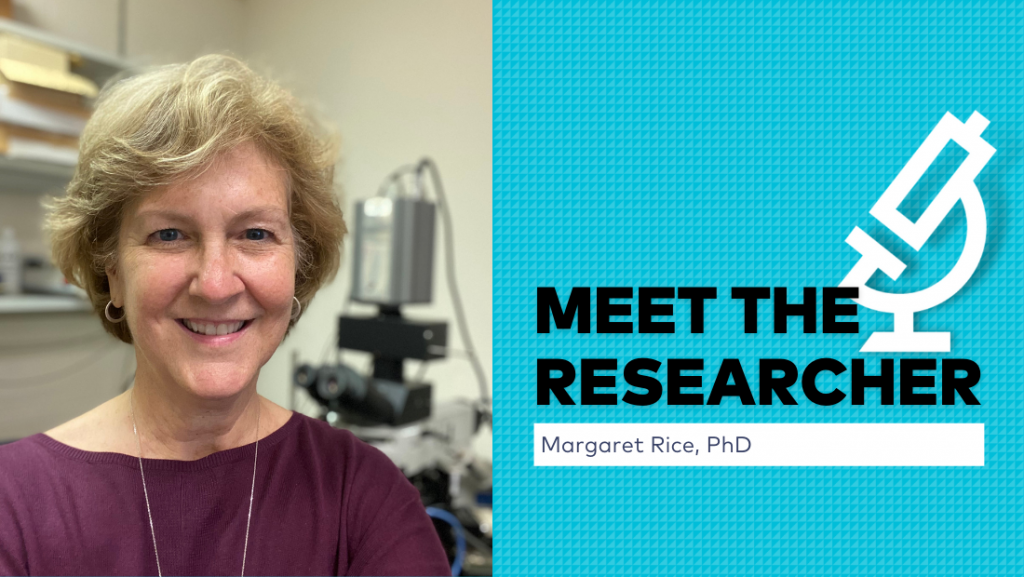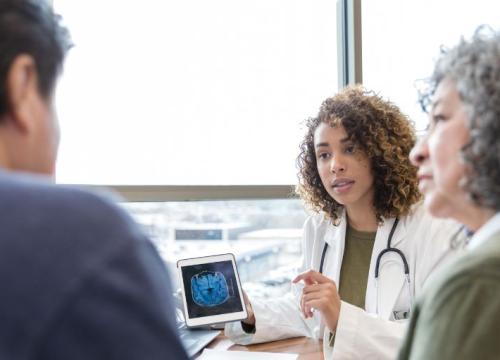Meet the Researcher Dedicated to Dopamine

The way dopamine is released and how it influences other cells (called neurotransmission) is a critical factor in understanding how Parkinson’s disease (PD) affects the brain. The influence of dopamine is also critical for motor and reward, or reinforced, learning.
New York University’s Margaret Rice, PhD, has worked to understand dopamine neurons and their role in movement for decades, bringing new insights and understanding to Parkinson’s as well as a host of other neurological conditions and movement disorders.
The Parkinson’s Foundation caught up with Dr. Rice to discuss her research at the Rice Lab at New York University. She described the impact of the Parkinson’s Foundation early grant supporting her research and her hopes for encouraging a new generation of scientists to focus on Parkinson’s.
You received Parkinson’s Foundation research funding in 2002. How did it impact your work?
I was really interested in dopamine because it’s such a fascinating molecule. My research seeks to understand why dopamine neurons, the ones in the substantia nigra [the area of the brain that produces dopamine], are selectively vulnerable — it's a fascinating question, but also really important.
Can you describe the role of dopamine in understanding Parkinson’s?
Dopamine “wears” two main hats:
- As a conductor, orchestrating in movement — acting through substantia nigra dopamine neurons in the midbrain, which degenerate in Parkinson's
- As a motivational speaker, promoting motivation and reward — acting through nearby ventral tegmental area dopamine neurons
It makes sense that there are loops between these cell groups and that they're right next to each other, because movement and motivation are inextricably linked and dopamine neurons facilitate both processes.
I became particularly interested in somatodendritic dopamine release, which is an unusual way for neurons to communicate with each other. Typically, neurons extend long connections to release dopamine in a location called a synapse. However, the dopamine neurons in the midbrain not only make traditional connections but they also release dopamine directly from the cell body to influence their own activity, and possibly that of their immediate neighbors. My grant proposal was focused on studying that release process using carbon fiber microelectrodes (conductors) to detect dopamine release in brain slices.
The Foundation’s funding allowed me to pivot my research. I was able to use preliminary data from this work to get a National Institutes of Health (NIH) grant and I have had continuous funding since then to study dopamine. Our most recent work is addressing fundamental questions about this dopamine release. This work was published in 2021, so the trajectory has been onward and upward since that funding from the Foundation, which came at a crucial moment.
You have been dedicated to Parkinson’s research for 20 years. How has the impact of your work helped the PD community better understand this disease?
If you don't understand how something works, you're not going to be able to fix it. So, you have a cell phone and suddenly it doesn't turn on. Why? If you don't understand that you need to be charging it regularly, that it has a battery, it's useless for you.
A lot of our work is basic science. Understanding how this process of dopamine released by dopamine neurons happens is important. There is a dopamine toxicity theory of Parkinson's disease, for example, that theorizes that dopamine can oxidize [a chemical reaction], which can be toxic to cells and may contribute to the selective degeneration of dopamine neurons. Understanding factors that regulate dopamine release and uptake inside cells and understanding which aspect of this process might go awry and contribute to a degenerative process — all of this is critical in understanding Parkinson’s.
You are part of the Parkinson’s Foundation Scientific Advisory Board. Can you tell us about this work and your interest in helping the next generation of Parkinson’s researchers?
I continue to believe that this should be one of our most important missions — to help new investigators get seed money for bigger funding, but also to engage them in the Parkinson's field. We get fantastic proposals, and it would be great if those folks became interested in turning their attention to either fundamental neuroscience about dopamine, the basal ganglia function (brain structures responsible for motor learning) or disease processes. They are all important in moving the field forward.
What makes you most hopeful that we will reach an understanding of the disease that impacts people with Parkinson's?
The more we understand how circuits and cells of the basal ganglia function normally, the greater the chance of restoring that function. If we can understand how the components of this motor system work together, we could fill in a piece that may be broken even if we haven't fixed the cause.
Learn more about Parkinson’s Foundation research initiatives at Parkinson.org/Research.
Related Blog Posts


Defining Parkinson’s Disease for the Next Generation of Therapies
